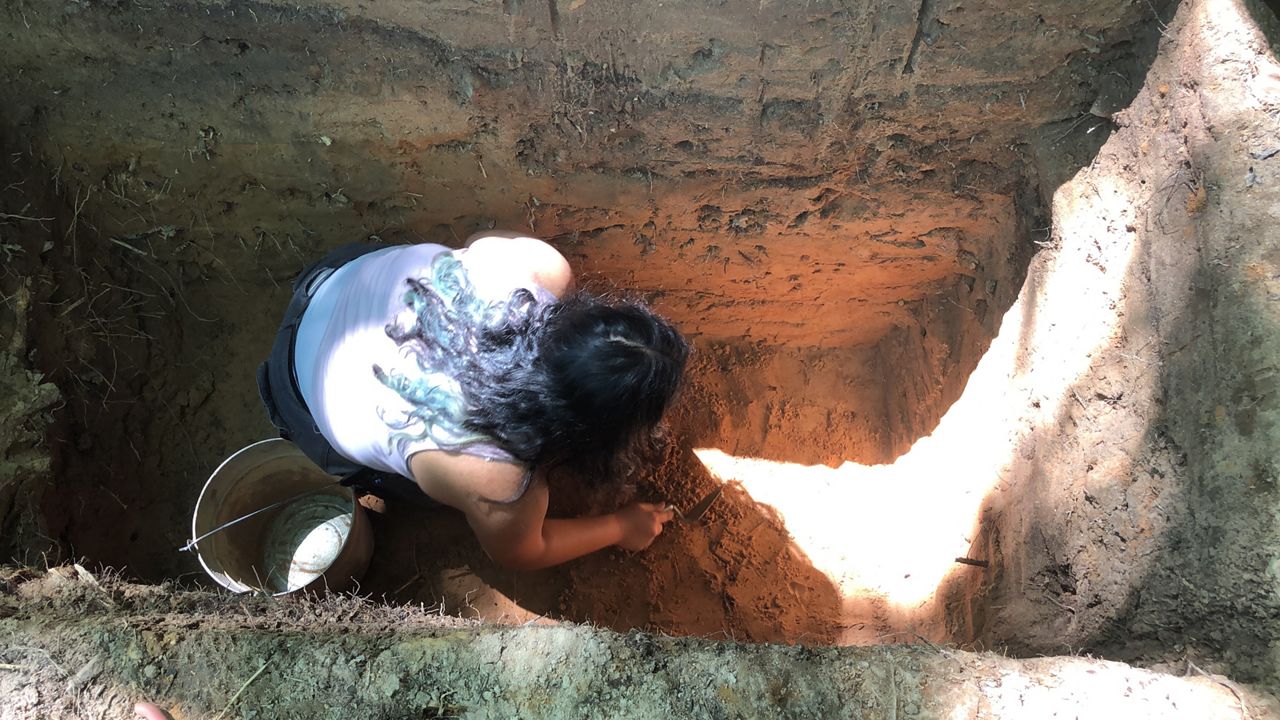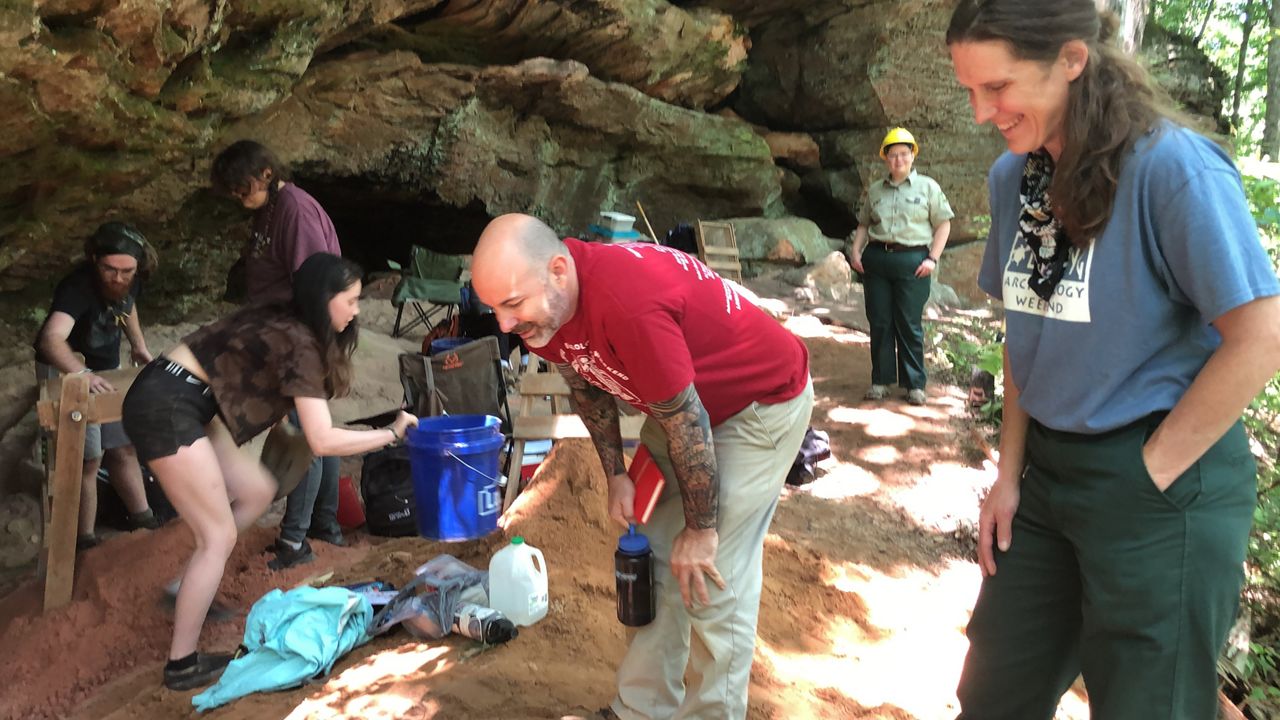SAND GAP, Ky. — A dozen Eastern Kentucky University students spent weeks digging up artifacts this summer.
What You Need To Know
- EKU field school resumed this year
- Students helped preserve a rock shelter
- The site could soon become eligible to be on the U.S. Forest Service's national registry of historic places
- Assistant Professor Jon Endonino said a big issue these sites face is with illegal digging
It's part of an outdoor classroom to gain experience as archaeologists and preserve rock shelters at the Daniel Boone National Forest.
Sophomore Faith Montalvo and Senior student Santana Adams paired as partners as they dug at an archaeological site at Sand Gap, Kentucky.

“It looks like I’m 163 centimeters down, so I need to go a few more centimeters,” Montalvo said while she measured her site.
“The first week of this field school, we got to learn about the logistics of it, like mapping, compassing, and stuff like that, how to dig properly,” Montalvo said. “And it's stuff that I've always been interested in, like, I have tons of maps in my room. I love compasses, it doesn't make sense. I just kind of love it naturally.”
It’s more than digging for these students from Eastern Kentucky University, however.
“We were actually really lucky to get to come out this year,” Adams said. “Thankfully vaccines came out in time and I got it before senior year.”
Adams said the COVID-19 pandemic canceled last year’s field school for these anthropology students while she pointed out lessons she’s learning.
“All the undisturbed soil, which means that it hasn't been touched, and that's where we're finding most of our artifacts from,” Adams said. “Just because nobody's touched that in say eight or nine thousand years, which is pretty cool.”
This means they’re back collecting valuable artifacts.
“We have a La Croix, and that's going to be your early archaic which means that it dates back to about eight to nine thousand years,” Adams said while she holds an artifact. “This is definitely one of the oldest pieces that we've found.”
The field school spent more than a month sifting through piles and piles of dirt just so Adams and her fellow classmates gain a better idea on the first settlers of the Commonwealth.

Illegal Digging
Going beyond the digging however, Assistant Professor Jon Endonino said there’s a much bigger issue.
“So you can tell where they’ve been by the nonsystematic haphazard random digging,” Endonino said.
He said there’s evidence at the rock shelter site.
“So they come to sites like this, and they dig into the rock shelters, looking for any kind of stone tool that they can find and in the process of doing that, they are destroying everything else around it,” Endonino said.
Endonino said the team is on a mission to preserve the rock shelter.
“In the pursuit of artifacts that are aesthetically pleasing or have monetary value, they're throwing away the rest of the history that's all around it,” Endonino said.
The class spent time working their way to assess the damage, determining its historical value and research potential. Their findings could determine the rock shelter’s eligibility to become a listing on the U.S. Forest Service’s National Register of Historic Places.
“The students are learning how to conduct scientific research, carry out their work in an organized and methodical fashion, collect data, interpret it and then help assess the integrity and preservation of the site but also reconstruct the life ways of the people who once lived here,” Endonino said.
Following the field school, the students return to their labs at EKU and document their findings.
“The thought of getting to touch something that a person you know, up to nine thousand years ago has had their hands on because really, who gets that opportunity?” Adams said.



